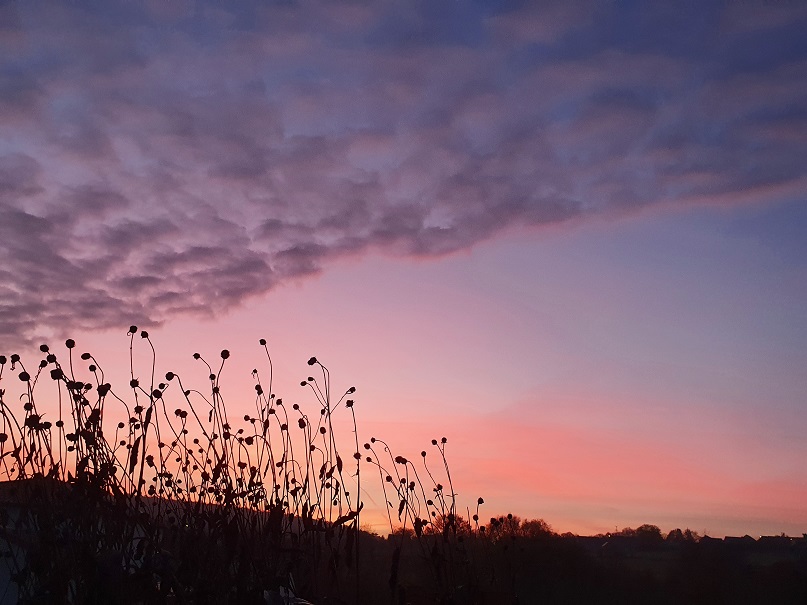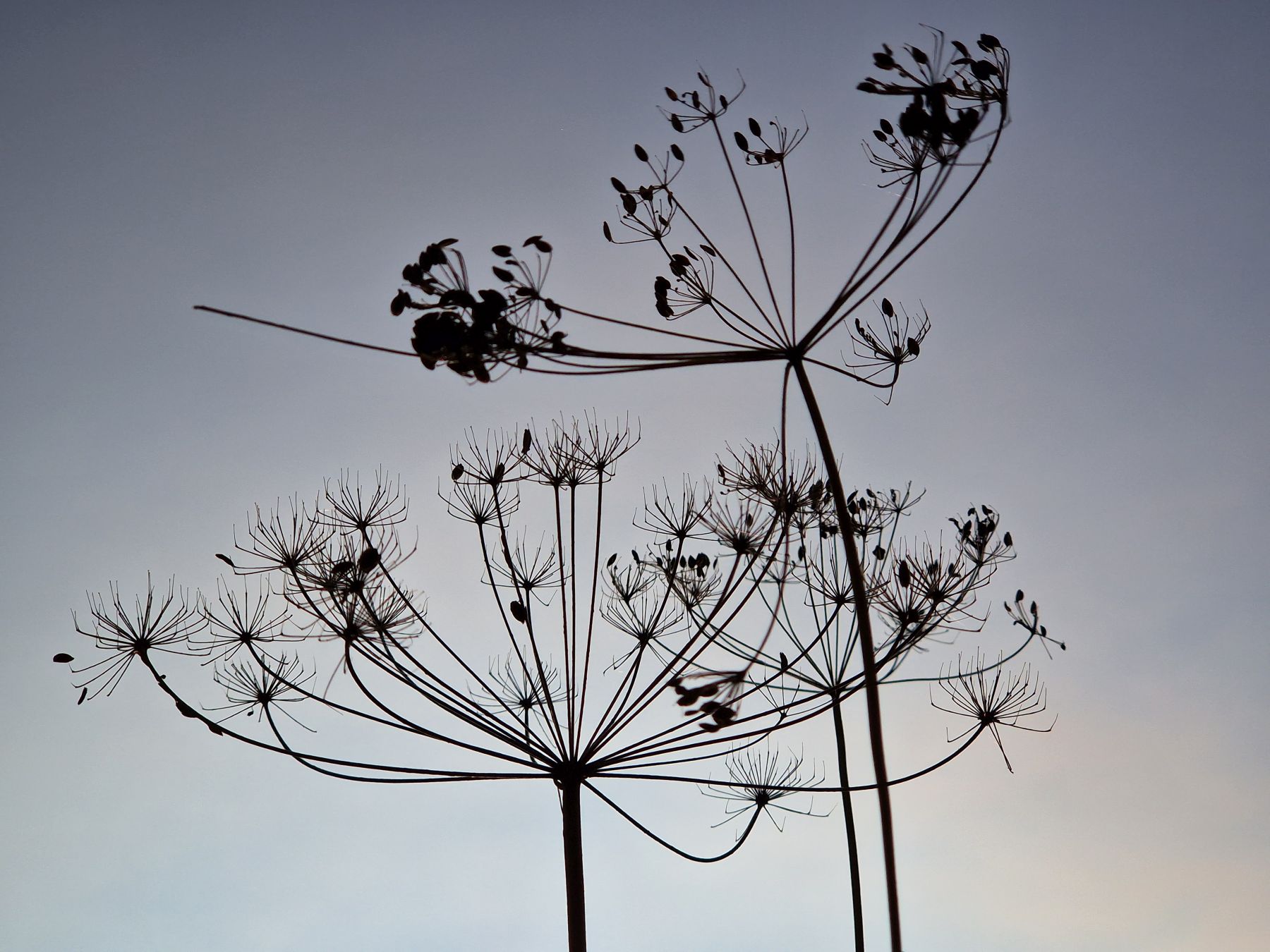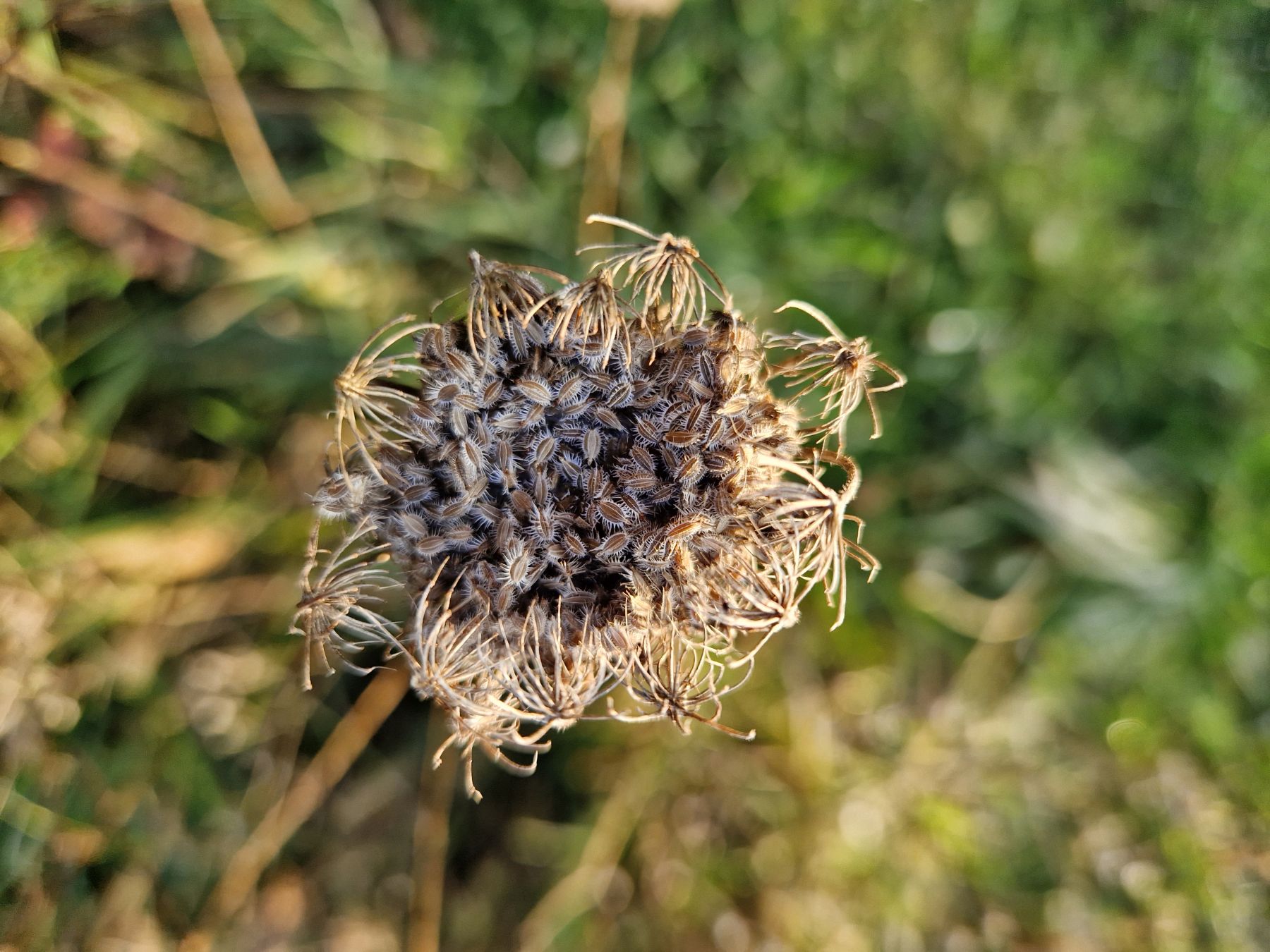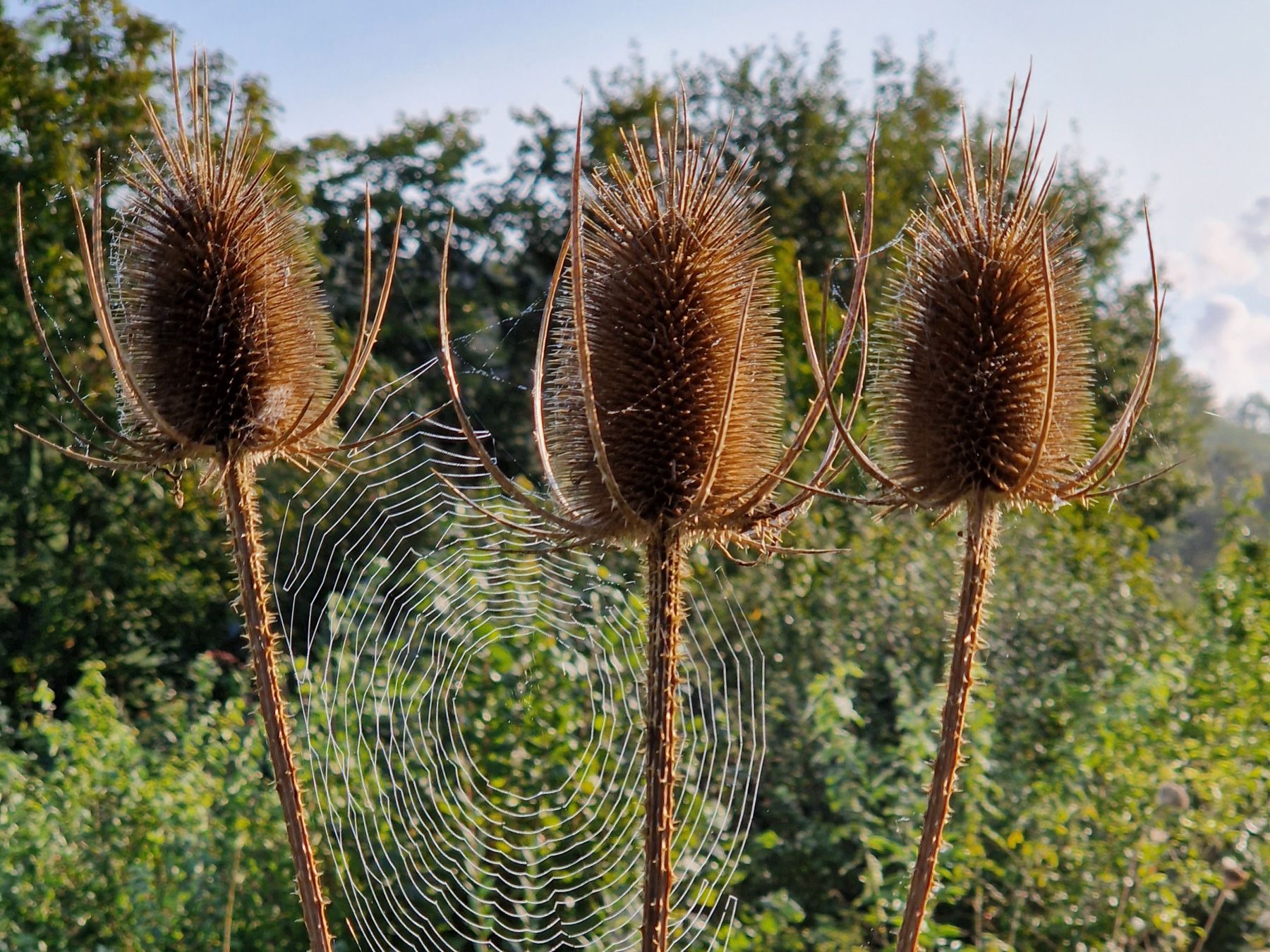



Autumn in the garden
27/09/2024
The days are beginning to shorten, the temperature is dropping, winter clothes are coming out of the closet, most plants have finished flowering, and the tree leaves are changing in color and starting to fall, ...... autumn is at our doorstep! This blog gives you insight into how you can prepare your garden for winter while caring for biodiversity, soil life and plants.
With the hours of sunshine reducing, you will have noticed that the grass grows slower and that you need to mow less. Ideally, you should also not mow too short (ca. 6 cm or mor). For the hay meadow, September-October is also the period of a second mowing with the brush cutter or scythe, so that the vegetation enters winter short. Ideally you leave 10-30% of your meadow unmown as a shelter for the many insects to overwinter. This can also be done in a wilder area of your garden, under a hedge or in a corner at the back of the garden. Did you know that many insects deposit their eggs on plants, under leaves or in stems. An adult only hatches here next spring so wait to clear out until March to give them a chance.
The long vegetation and dried seed pods are also quite beautiful. Wild teasle, common mullein, St John's wort, wild carrot, poppy, big primrose, common hogweed and hemp agrimony are among my favourite winter silhouettes. They add some structure to your garden in winter, provide birds with seeds and are beautifully decorated by cobwebs. I personally prefer it to a flat lawn with nothing left on it until April. You will find lots of life here even in the colder months.
Getting rid of weeds from your border or clearing your vegetable beds after harvest is of course totally fine, but it's best to avoid bare soil in your garden. That is because your soil will dry out, the soil life and structure will be affected, you'll have more weeds later and you'll start with a delay next spring. The solution? Use mulch: dry leaves, straw, hay, bark, twigs, wood chippings, grass clippings or even moss to cover the soil. This way you feed the organic layer of the soil, like a natural compost, but also provide protection against rain, frost, erosion and drought. Some plants benefit from an extra layer of leaves or hay anyway to prevent the roots from freezing during the cold winter days.
Alternatively, you can sow green manure as a ground cover. We do this mainly in our vegetable garden with leguminous plants to provide the soil with extra nitrogen and a better soil structure. In August and September, you can still sow yellow mustard, vetch and clovers, later it is mainly rye or other winter cereals. Once withered, the green manure is not harvested but worked into the soil.
Don’t forget your garden wildlife. Birds also use nesting boxes to take shelter or sleep in cold weather, so clean and prepare them for fresh nesting material and leave them hanging. In our garden shed, a bat hibernates every year. Rodents, butterflies and other insects also find shelter there, as well as in the hay rider. Hedgehogs, newts and salamanders overwinter in wood and leaf piles, in which moths can also often be found. A dead hedge also provides an ideal wintering place. By now you will have understood, your garden should not be too where it is not needed, this way you give biodiversity more space in winter. The major advantage is that you will be doubly rewarded in spring when all life starts fluttering, flying, crawling and buzzing again. It pays off to be a lazy gardener. Enjoy autumn!
Comments
- Bedankt voor deze tips. Helemaal met je eens dat uitgebloeide bloemen prachtige wintersilhouetten vormen, met spinnenwebben! Fijne herfst, mijn lievelingsseizoen <3 (Sarah)
- J'adore l'idée de laisser la nature s'exprimer et de préparer le jardin pour l'hiver tout en respectant la biodiversité et en préservant la vie du sol. (aisyah)
Add a comment


